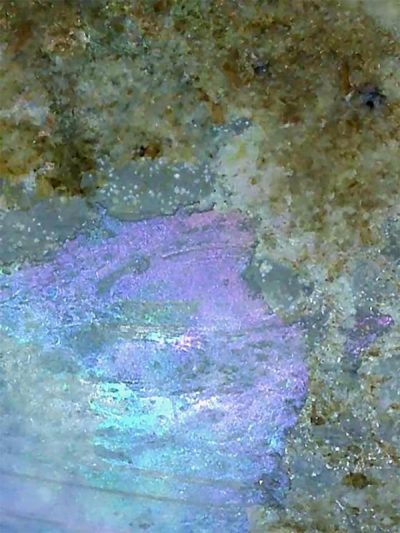Since buying the piece of Roman glass I described in my previous post, I’ve been interested in its iridescent surface and what causes it.

Having done a quick search I discovered the following on an ancient glass website:
Caused by weathering on the surface, the iridescence… is due to the refraction of light by thin layers of weathered glass. How much a glass object weathers depends mainly on burial conditions and to a lesser extent the chemistry of it… The word iridescence comes from Iris, the Greek Goddess of rainbows and refers to rainbow-like colours seen on the glass which change in different lighting. It is simply caused by alkali (soluble salt) being leached from the glass by slightly acidic water and then forming fine layers that eventually separate slightly or flake off causing a prism effect on light bouncing off and passing through the surface which reflects light differently, resulting in an iridescent appearance.
On another website:
Water leaches the alkali (soda) from the surface of the glass, especially in slightly acidic burial environments. This leaves behind fine layers of silica that can flake off the surface. The iridescence is purely a visual effect; in the same way that water droplets in the air cause rainbows, light is bent and split into its separate colours as it passes through the thin layers of deteriorated glass and air.
Having read the above, I decided to view the glass through a microscope, the rather beautiful results of which can be found below:
In these images you can see the fine, flaking layers and how they refract the light to create the iridescence visible on the glass.











